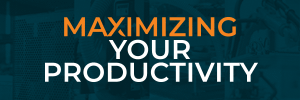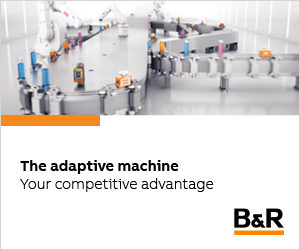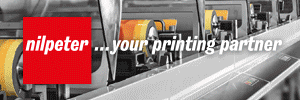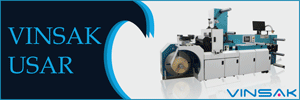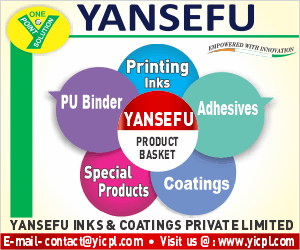
Metpack, following a six-year interval, uncovers a fresh outlook on an industry that has acquired a niche status, characterized by its relatively smaller size and slower growth compared to other sectors within the packaging industry. Contrary to initial assumptions, the metal packaging segment stands as a resilient and self-assured force globally, boasting a substantial market value of USD 108.8 billion in 2020. According to research conducted by the firm Global Opportunity Analysis, this sector is projected to ascend to USD 147.4 billion by 2030, exhibiting an average annual growth rate of 3.1% from 2021 to 2030.
The potential resurgence of metal packaging can be attributed to three key factors. Firstly, the rise of a prosperous consumer class in both developed and emerging economies, which has resulted in an increased demand for metal packaging in personal care, food, and beverage products. In developed economies, the higher cost of steel or aluminum is readily absorbed by the mass consumers, given their higher disposable income. On the other hand, in emerging economies, metal packaging may elevate the product cost, leading to its application in luxury items, like smaller beverage cans. In these markets, metal packaging serves as a symbol of youth, social status, and affluence.
Another contributing factor to the potential resurgence of metal packaging is advancements in technology. Metpack, for instance, focuses on the technological aspects of metal containers. These containers have undergone significant improvements, becoming lighter and thinner. Additionally, the coatings, sealants, caps, and closures associated with metal packaging have become more convenient and aesthetically appealing. As a result of these technological advancements, the processes involved in containment, preservation, and logistics have become more efficient.
The coating and decoration technology associated with metal packaging has experienced significant advancements, becoming more streamlined and efficient. These advancements include the utilization of new plasma surface treatments, lacquers, inks, and haptic coatings, which enhance the metallic appearance and texture desired by other packaging materials. Moreover, the advent of digital printing has revolutionized the industry by enabling small-scale production runs for craft beer and small wineries, which was previously challenging to achieve. This technology has opened up new possibilities for customization and branding in the metal packaging sector.
In reference to the resurgence of metal packaging, Alexander Hinterkopf, the managing director of Hinterkopf, a company specializing in manufacturing digital presses for cans, recently stated that “metal has become sexy again.” Their digital can printing machines, showcased at multiple Metpack events, have garnered attention, especially with their new generation print heads capable of 1800 dpi resolution. However, the company is aware that the growing market traction is primarily due to advancements in inkjet arrays. As the concept of small directly printed tubes and containers gains popularity, it is expected that more competitors will enter the market, driving further improvements and innovation. Therefore, staying at the forefront of technology and continually enhancing its offerings will be crucial for sustaining its competitive edge in the metal packaging industry.
The third driving force behind the prevailing sense of enthusiasm in the metal packaging industry stems from its unique position as a specialized and harmonious sector aligned with metalworking practices. Despite being considered a niche industry, it has embraced its identity and recognizes the durability and strength of the material it employs. As affirmed by Hinterkopf during the Metpack conference, metal is deemed inherently superior for packaging purposes.
The third impetus is not solely attributed to metal’s superiority as a container, but also to its recyclability and relatively higher cost. Another speaker emphasized that the growing concerns surrounding climate change have made packaging recyclability an imperative. These concerns act as a positive force, providing a “tailwind” that amplifies the current interest in metal packaging. The industry’s ability to address sustainability and environmental considerations has further fueled its optimism and garnered increased attention.
During the opening press conference, Claudia Bierth highlighted that current regulations on packaging recyclability in Europe exempt wine, aromatized wines, and spirits from the standard obligations of recycling their packaging. However, it is worth noting that glass, which is commonly used in this industry, poses challenges due to its carbon-intensive nature, heavyweight, fragility, and logistical complexities. Glass also presents difficulties in collection and recycling processes, requiring significantly more energy compared to aluminum recycling.
In developing or emerging economies, the true opportunity lies in the substantial value that metal packaging brings, creating tangible income-generating prospects for waste collectors and sorters. Unlike paper-based and plastic packaging, which typically have limited value, metal packaging commands a higher worth within the recycling market.
In countries like India, metal packaging is already being collected more efficiently compared to mixed polymer plastic packaging. The latter suffers from issues related to weight and value due to difficulties in identifying laminates for proper waste stream segregation and lateral recycling. In contrast, single polymer recyclable laminates with suitable barrier properties face challenges due to cost-consciousness within the consumer product industry.
Additionally, the advanced or chemical recycling of mixed plastic waste is still in its early stages globally, making it less viable as a widespread solution at present. In this context, metal packaging emerges as a more favorable and economically beneficial option for waste management and recycling in developing economies.
The wine and spirits industries are quite full of themselves globally. Leave aside the strong wine and spirit industry lobbies in Europe that have managed to exempt themselves through their strong lobbying of the regulators for recycling. In India, the major global spirit supplier Pernod Ricard has done away with the cartons it used to ship its bottles in. Speaking of this as a great environmentally conscious move, it has blithely forgotten that it is a major user of heavy, fragile, and energy-consuming-to-recycle glass bottles for the burgeoning liquor industry.


